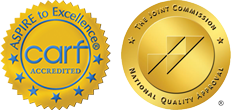The road to sobriety is a challenging and rewarding journey, with numerous obstacles and triumphs along the way. But what happens when a person finally attains sobriety, dealing with the emotional baggage of addiction while trying to adjust to a new way of life? One increasingly popular approach to helping people in recovery is the utilization of the arts as a means of self-expression, self-discovery, and healing.
The Importance of Creativity in Sobriety
For those in recovery from addiction, the period after achieving sobriety can be a daunting time of adjustment. Revisiting emotional traumas, confronting past behaviors, and reestablishing a new and healthy sense of self can be difficult. In many cases, the emotions and memories experienced in recovery can be overwhelming, presenting a risk for relapse.
The arts offer an opportunity for people in sobriety to tap into their creativity as a means of coping with their emotions, exploring their new identity, and connecting with their inner self. Through practices such as painting, drawing, writing, and music, the arts provide a safe and constructive way to channel one’s energy and express their thoughts and feelings.
Furthermore, engaging in artistic activities has been linked to numerous mental health benefits. A study conducted by the American Journal of Public Health found that engaging in the arts can help reduce stress and anxiety, improve mood, and even boost self-esteem(1). By incorporating the arts into their recovery journey, individuals can gain a sense of self-efficacy and accomplishment, building a foundation for sustained and lasting recovery.
Art Therapy as a Path to Healing
Recognizing the therapeutic potential of creativity, many addiction treatment centers and recovery programs have started to incorporate art therapy into their approaches. Art therapy is a form of psychotherapy that involves the use of art-making and creative self-expression to improve a person’s overall well-being(2).
Through the use of various artistic mediums, individuals can externalize their thoughts, emotions, and experiences, gaining insight into their inner self and healing in the process. Art therapy typically involves the guidance of a trained mental health professional, who can facilitate the creative process and help individuals make connections between their art and their emotional experiences.
Do you have a loved one struggling with addiction?
We know how hard that can be. Give us a call to find out what options you have.
Research has shown that art therapy can be an effective tool in helping individuals in recovery address trauma, reduce depression and anxiety, and improve self-image(3). By providing a safe and non-judgmental environment for self-expression, art therapy supports the healing process and promotes the development of essential coping skills necessary for lasting sobriety.
Examples of Artistic Practices in Sobriety
There are many ways in which individuals in sobriety can engage with the arts and harness their creative potential. Some examples include:
- Visual Arts: Paintings, drawings, collages, and sculptures can serve as a powerful means of self-expression, allowing individuals to work through emotions and memories that can be difficult to put into words.
- Writing: Journaling, poetry, and creative writing enable individuals to tell their story or explore their emotions through the written word, offering a cathartic release and supporting self-reflection.
- Music: Creating or listening to music can serve as an emotional outlet or a means of relaxation, encouraging creativity and a connection to the inner self.
- Dance and Movement: Through dance and movement therapy, individuals can connect with their body and emotions, exploring new ways of self-expression and self-awareness.
Conclusion
As a means of self-expression and self-discovery, the arts are a powerful tool in the journey of sobriety and healing from addiction. By tapping into their creativity and harnessing the therapeutic potential of artistic practices, individuals in recovery can develop essential coping skills, work through emotional experiences, and cultivate a newfound sense of self. From art therapy in addiction treatment centers to the continued exploration of the arts outside of therapy settings, there is no denying the transformative potential of creativity as a guiding force on the path to lasting sobriety.
References
[1] Stuckey, H. L., & Nobel, J. (2010). The Connection Between Art, Healing, and Public Health: A Review of Current Literature. American Journal of Public Health, 100(2), 254–263. https://www.ncbi.nlm.nih.gov/pmc/articles/PMC2804629/
[2] American Art Therapy Association (2017). What is Art Therapy?. https://www.arttherapy.org/upload/whatisarttherapy.pdf
[3] Shella, T. K., & Hossain, M. Z. (2017). Role of Art Therapy in Reducing Psychological Distress in Female Students. Asian Journal of Research in Social Sciences and Humanities, 7(7), 42-54. https://pubmed.ncbi.nlm.nih.gov/28759642/




